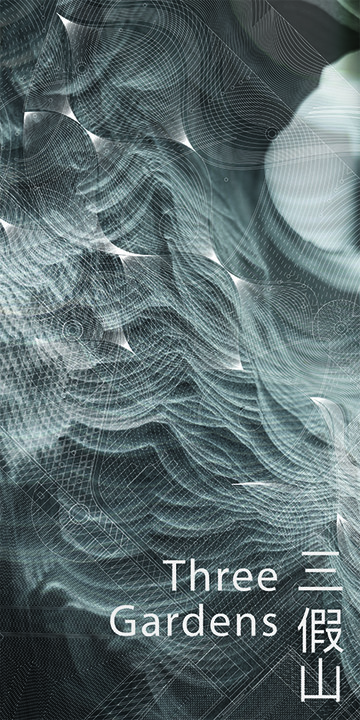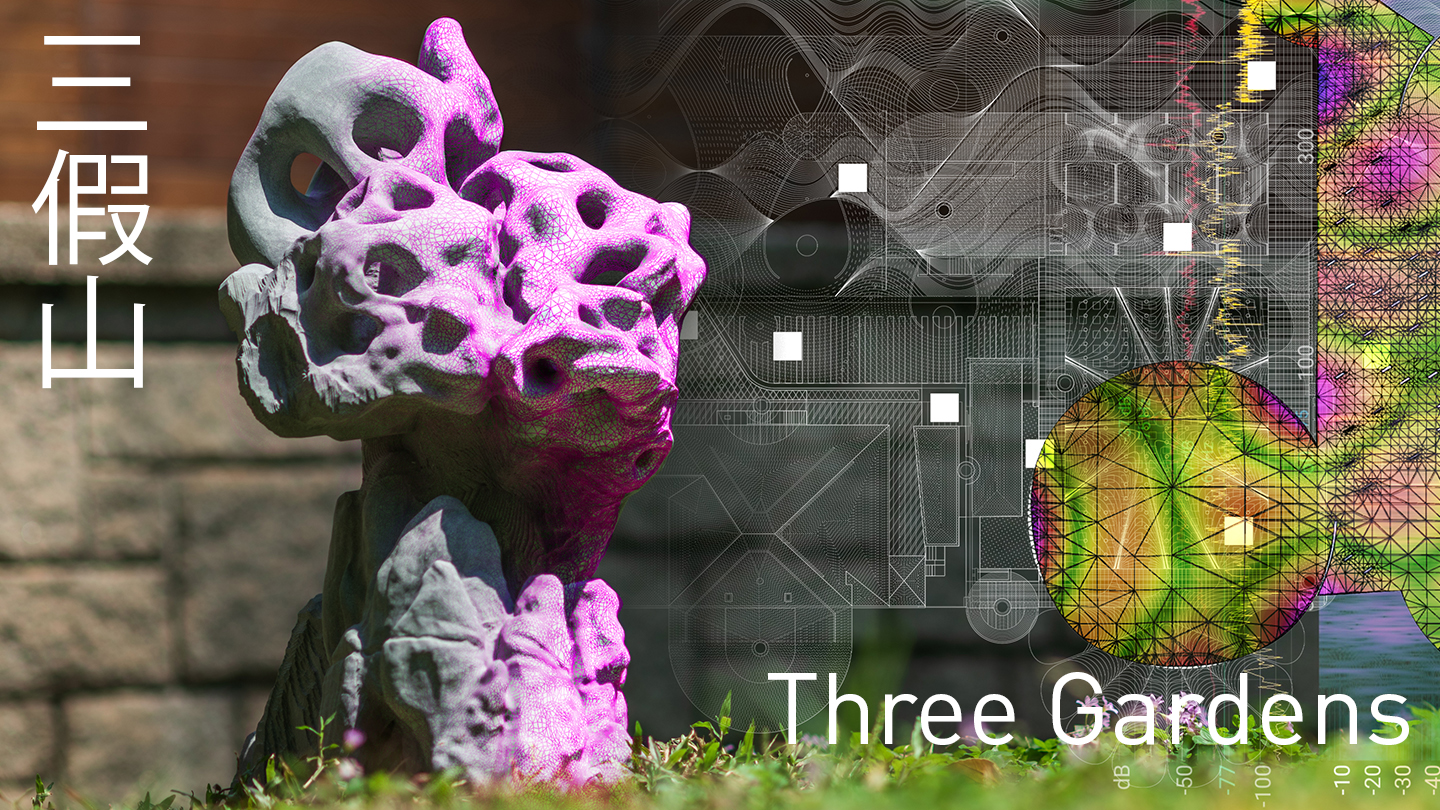Three Gardens / 三假山
Exhibition
Three Gardens, an exhibition on the theme of Hong Kong’s relationship to landscape, natural artifice and artificial nature by Tobias Klein with Alvaro Cassinelli.
24 May
30 Oct 2022
Monday: 2pm - 8pm
Tuesday to Sunday: 10am - 8pm Closed on Public Holidays Oi! 12 Oil Street, North Point, Hong Kong, Oi! Study and outdoor areas
FREE
|

|

Three Gardens - 三假山
Three Gardens is a concept to articulate a new understanding of landscape within the manufactured realities of Hong Kong and within the global contemporary artifice we live. It is the title of three site-specific installations on the grounds of Oil Street Art Space, also known as Oi!. To understand the three works and the relations between them, we must see the works in the artistic lineage and context of Chinese gardens and landscape painting – both being constructed simulations of the actuality of the wild nature – a construct of reflection and adoration, danger and uncertainty.
Throughout the development of Chinese landscape painting, the meaning of the depicted, and largely constructed landscape shifted from an early universal longing of cultivated men to escape their quotidian world to commune with nature, to a more sophisticated literati understanding of landscape as a metaphor for specific social, philosophical, or political convictions. The three gardens negotiate, extend, and evolve that notion of the constructed landscape – a combination of the two characters 山水, mountain and water. The three gardens work through imitation, representation and transformation, gradually dissolving the perceived physicality of the landscape concept and the associated garden.
01
The first garden is set in the outdoor spaces of Oi!. In as much as any garden is an imitation of the actuality, so is the first garden of Oi!. The garden’s ground is artificially reclaimed land. The trees and lawns are located where once the shoreline was, about 100 years ago. The buildings were once the Royal Hong Kong Yacht Club. The intervention consists of four carefully placed stones, completing the first garden – a rockery 假山, of fake mountains – mystical scholarly rocks in the classical garden analogy.
The four mountains are Meta-morphs. Each is made from natural limestone, carved by industrial-scale robot arms based on a 3D-scanned Chinese Scholarly Rock. Each explores the tension between form and aura, man-made objects of perfection and complex, chaotic forms of nature. They are a fabricated metamorphosis of the original emerging through tooling marks – unfinished striations of the fabrication forming a discourse of technology as expression of the brush in the landscape painting. The Meta-morphs are mathematical processes in computer-generated geological formations. They are “emerging” sculpted reductions of the original scanned, articulating the Gestalt within the found and computational – bridging the traditional with the contemporary.
02
The second garden is an interior garden. It is a collaboration between Tobias Klein and Alvaro Cassinelli. Located within the buildings of Oi!, the second garden is a hybrid between an architectural representation and a sonic simulation. It is an interactive model – an installation in which the audience can explore the relationship between shape, geometry, resonance and energy. This garden takes reference from the dry stone garden concept, where the absence of water is made visible through carefully composed arrangements of rocks and gravel that is raked to represent ripples and waves.
The second garden is an industrial garden made from laser-cut and acid etched steel plates. It is a resonating, ephemeral garden where sand is carried as liquid flowing in reverberating patterns. The second garden is called Cymatic Ground. Combining Art and Science in interdisciplinary collaboration, we created a sonic extension of the landscape as a liquid shapeless continuum, made visible through vibrations. The work articulates the invisible frequencies within each material and shape, where energies brought into harmonies create overlaying vibration, agitation and movement. These natural frequencies show the interplay between geometry and sound.
Like the coastal lines are slowly shaped by the energies carried by the waves of the ocean, the vibrations in the Cymatic Ground uncover the invisible patterns of energies flowing through the landscape.
03
The third garden is neither here nor there – it sits in between. It is based on physical elements yet itself is immaterial. It is playful and explorative, minimal and mathematical, digital and analogue, site-specific and independent. It is a technological garden – a simulation and at the same time a transformation.
It is a software landscape in the form of an app that allows the audience to collect experiences from the previous gardens to create their own landscape. We walk through the first garden and scan the space narrated through the Meta-morphs; we feel the vibrations of the Cymatic Ground and record the frequencies of the instrument. All input is transformed into vectors and attractors, virtual rocks and pebbles. Our experiences become invisible forces and their relation to each other in a system. They become the artificial mountains in an artificial garden (假山). The third garden is an arrangement of simulated force attractors that allows the visitor to create an infinite amount of reactive landscape systems. In some ways, the disillusion of the landscape being real and physical, is similar to the painting of it, where water and ink construct like pixels as ground for contemplation and reflection about one’s own position in such a constructed landscape.
Three Gardens - 三假山
在香港虛妄的現實和全球當代的浮華之中,《三假山》為「地貌」注入了新的理解。要明暸這三件專為「油街實現」而創作的場域特定裝置,領會三者之間的關係,就先要將作品置於中國園林和山水畫的藝術脈絡之中。這兩種藝術形式,同樣以建構模擬的大自然為本,當中蘊含自省和景慕,也潛藏着危險和未知。
在中國山水畫的演變過程中,畫中差不多全為虛構的風景含義亦有所變更,由初時有識之士普遍對脫離俗世、與自然融為一體的嚮往,轉為文人對山水更為微妙的參悟。山水成為意象,寄託對社會、哲學和政治的信念。《三假山》將虛構山水的理念梳理、伸延及演化,一步步由摹仿、呈現到革新,逐漸瓦解山水概念中既有的實體性,並將之引伸到中國園林。
(一)
第一組作品位於「油街實現」的戶外園景區。正如其他所有園林一樣,這座園林是對現實的摹仿。現時假山所在之處,實為填海所得:這些草木身處的位置,在約一百年前為海岸線;而「油街實現」建築物的前身,則為皇家香港遊艇會會所。藝術家在此處精心佈下四塊石頭,建成第一組作品。這些石頭是為假山 ,好比在中國園林中玄妙的供石。
這四座假山名為〈元變石〉。每塊石頭均為天然石灰岩,按照傳統供石的三維素描,經工業用機械臂雕鑿而成。每一座假山均在摸索藝術品形態和靈光(Aura)之間的角力,追尋人造的俐落工整與大自然複雜凌亂形態之間的弛張。當原石經過人為的突變後,假山便從刻痕中慢慢浮現。作品上留下未完成的紋理,好比山水畫中的筆觸,是為對科技的論述。〈元變石〉是利用電腦運算數學程式產生的地貌,從起初的掃描以雕琢的方式刪減,令假山逐步顯露。作品展現在自然形態和電腦生成之間、超越兩者的完形整體(Gestalt),同時連接傳統和現代。
(二)
第二組作品是個位於「油街實現」建築物內的室內園林。這個由簡鳴謙(Tobias Klein)和Alvaro Cassinelli攜手創作的裝置,糅合了建築的呈現與聲音模擬。觀衆可從這個互動裝置中,探索形狀、幾何學、共振和能量彼此間的關係。作品受日本園林「枯山水」的手法所啟發:巧妙布置傾斜的細沙碎石,用以模仿漣漪及波浪,展現園景中本來欠缺的「水」。
第二組作品是個「工業園林」,主要由激光切割和酸性浸蝕的鋼板築成。在共振的帶動下,沙粒猶如流水般流動,形成充滿聲音共鳴而變幻無常的園林,是以命名為〈觀聲園〉。創作團隊結合藝術及科學的跨領域合作,由地貌景觀伸延出流動無形的聲音光譜,並透過震動將其顯現。作品呈現各種物料和形狀内在無形的頻率;相異的頻率在作品中達至平衡,繼而引發相互交叠的震動、刺激及動態。這些自然的頻率,展現了聲音與幾何學之間的相互影響,猶如海與浪之間不斷地交流循環着無形的力量,也彷若在模擬世上每個人都參與其中的全球系統。
(三)
第三件作品不在此處,也不在彼方,而在虛實之間。它建基於有形之物,但自身卻是無形的。這座園林集奇趣與探索、簡約與精密計算、數碼與類比、場域特定與不受空間所限於一身。這座科技的園林同時包涵了模擬和革新。
第三件作品是個「程式園林」。觀眾可於應用程式上將前兩組作品的收集所得,創造他們獨一無二的景觀:先在第一件作品〈元變石〉中記錄四周的空間,再到第二件作品〈觀聲園〉中感受共振,蒐集作品的頻率。所收集的資料將轉化成向量和吸引子,以及虛擬的石塊沙礫。觀眾的體驗成為無形的力量,種種無形的力量又在系統中產生關係,最終成為這座人工園林中的假山。觀眾可以在第三件作品中排列吸引子,創造無窮而靈敏的地貌。從地貌真實有形的假象中覺醒,與山水畫的繪畫不無相通之處:作畫時的水墨,有如像素般一點點地塑造;而人在虛構的風景和地貌中,得以沉思自身的所在。